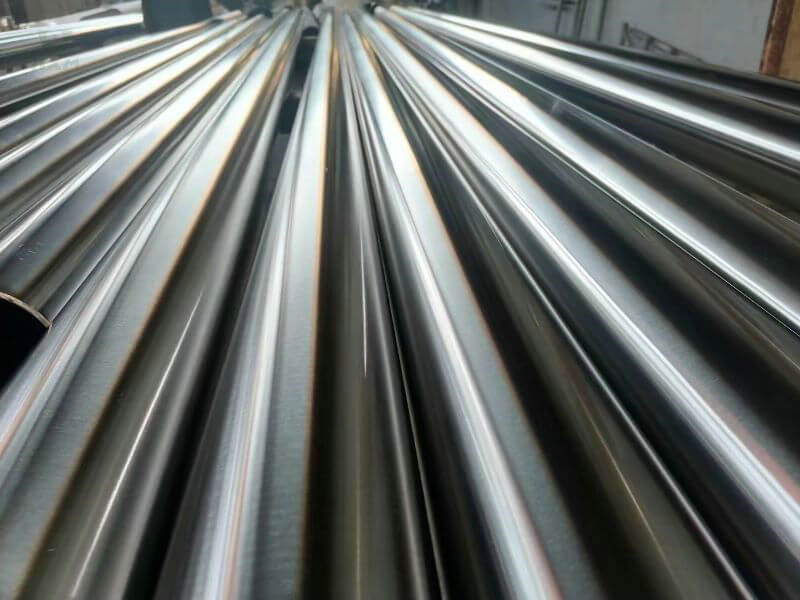What is the density of stainless steel?
In engineering design and manufacturing, having a thorough understanding of the density of materials is a crucial foundational task. For materials like stainless steel, widely employed across various industries, the significance of comprehending its density is self-evident. From material selection and structural design to production manufacturing, the density of stainless steel plays a pivotal role. This article will delve into the applications of understanding the density of stainless steel and how it exerts a significant influence in our daily lives and industrial production.
density of Stainless Steel-characteristics
Density, in physics, is defined as the ratio of an object’s mass to its volume. Mathematically expressed as: Density = Mass / Volume. The unit is grams per cubic centimeter (g/cm³). For materials like stainless steel, its density determines its weight and mass within a specific volume.
Density Values and Range of Stainless Steel
The density of stainless steel typically falls within the range of 7.70-8.00g/cm³. The specific density value depends on the alloy elements used in its manufacturing process and the fabrication techniques employed. For example, the density of 304 stainless steel is commonly 7.93g/cm³, while 316L stainless steel has a slightly lower density at 7.98g/cm³.
| Stainless Steel Grade | Density (g/cm³) |
|---|---|
| 201 | 7.80 |
| 301 | 7.93 |
| 304 | 7.93 |
| 316 | 7.98 |
| 316L | 7.98 |
| 317 | 7.95 |
| 430 | 7.70 |
| 2205 (Duplex) | 7.80 |
| 2507 (Super Duplex) | 7.80 |
| 17-4 PH | 7.75 |
The Impact of Stainless Steel Density on Its Performance
I. Influence on Structural Integrity:
The density of stainless steel significantly influences its structural integrity and overall strength. Higher-density materials tend to exhibit greater mass and weight, contributing to enhanced structural stability and resistance to deformation.
II. Weight-to-Strength Ratio:
Stainless steel density plays a crucial role in determining its weight-to-strength ratio. Materials with optimal density can achieve a balance between weight and strength, resulting in efficient and reliable performance in various applications.
III. Machining and Fabrication Considerations:
Understanding the density of stainless steel is essential for machining and fabrication processes. Density affects how the material responds to cutting, welding, and forming, influencing the ease of manufacturing and the quality of the final product.
IV. Corrosion Resistance:
While density itself is not a direct factor in corrosion resistance, it indirectly impacts the overall composition and alloying elements of stainless steel. The right density, along with appropriate alloying elements, contributes to the material’s corrosion resistance, a critical aspect of its longevity and reliability.
V. Application-Specific Requirements:
Different applications may demand stainless steel with specific density characteristics. Whether in aerospace, automotive, or construction, tailoring the material’s density to meet the requirements of a particular application is essential for optimal performance.
In summary, the density of stainless steel plays a multifaceted role in influencing its performance, encompassing structural integrity, weight-to-strength ratio, machining considerations, corrosion resistance, and meeting application-specific demands.
Practical Applications of Stainless Steel Density
I. Material Selection:
In the process of material selection, the density of stainless steel is a pivotal factor. For applications requiring substantial loads or sensitivity to weight, opting for stainless steel with lower density can reduce overall weight and enhance performance. Conversely, for applications demanding high strength and corrosion resistance, selecting stainless steel with higher density can provide superior mechanical performance and corrosion resistance.
II. Structural Design:
In structural design, the density of stainless steel affects its load-bearing capabilities and stability. By strategically leveraging the density characteristics of stainless steel, structural design can be optimized to improve overall stability and safety. For example, in architectural structural design, choosing stainless steel with moderate density can offer sufficient strength and stability while minimizing overall weight.
III. Production Manufacturing:
In the production manufacturing process, the density of stainless steel influences its forming and processing performance. High-density stainless steel is generally more challenging to process and requires specialized machining processes and techniques. Therefore, selecting stainless steel with the appropriate density based on product requirements and manufacturing processes can enhance production efficiency and product quality.
IV. Quality Testing and Control:
Stainless steel density serves as an indicator in quality testing and control. Measuring the density of stainless steel allows the assessment of its internal structure and purity, enabling judgments regarding its quality and performance. This method is commonly employed in the inspection and quality control of stainless steel materials to ensure product reliability and consistency.
In conclusion, the practical applications of stainless steel density are widespread, spanning from material selection to production manufacturing, and extending to quality testing and control. Understanding and mastering the characteristics of stainless steel density is crucial for optimizing design and production processes and improving product quality and performance.

conclusion
In this article, we delve into the density characteristics of stainless steel, including its physical significance, numerical range, relationships with other physical properties, and its significant impact in practical applications. The density of stainless steel not only determines its weight and physical performance but also plays a crucial role in material selection, structural design, production manufacturing, quality testing, and quality control.
Huaxiao Metal, headquartered in Shanghai, China, is a company with over 15 years of experience in exporting metal raw materials. Equipped with multiple production lines, we provide a variety of raw materials, including stainless steel sheets, coils, strips, pipes, bars, and wires. We look forward to establishing a long-term and stable cooperation with you, jointly contributing to the development of the stainless steel industry.
Get In touch
Ready to Elevate Your Projects? Dive into our Stainless Steel Collection and Submit Your Specifications Today!
Phone/WeChat:
+86 13381673250
Email: export86@huaxiao-stainless-steel/com
Address: RM557, NO.1388 Jiangyue Road, Shanghai China



